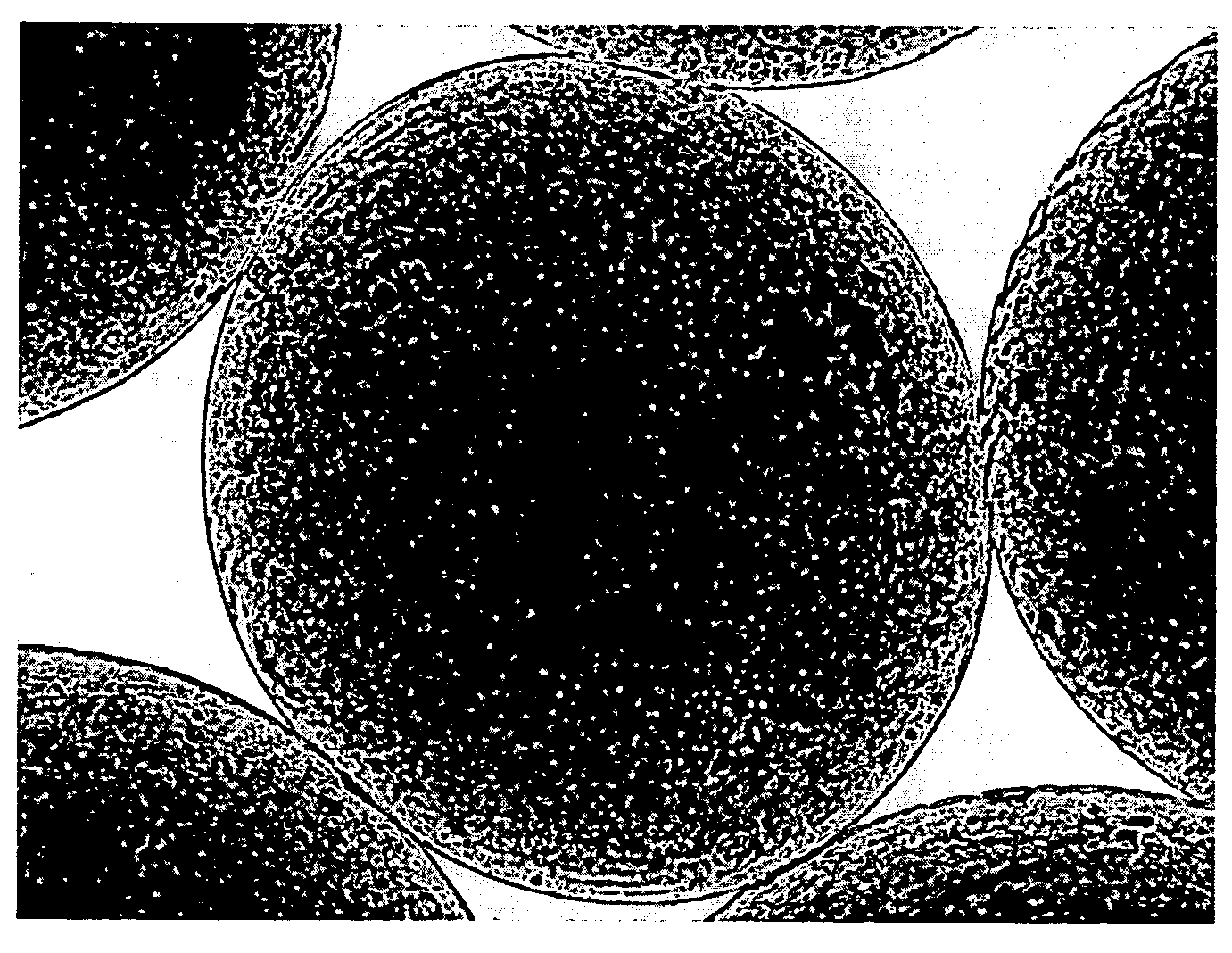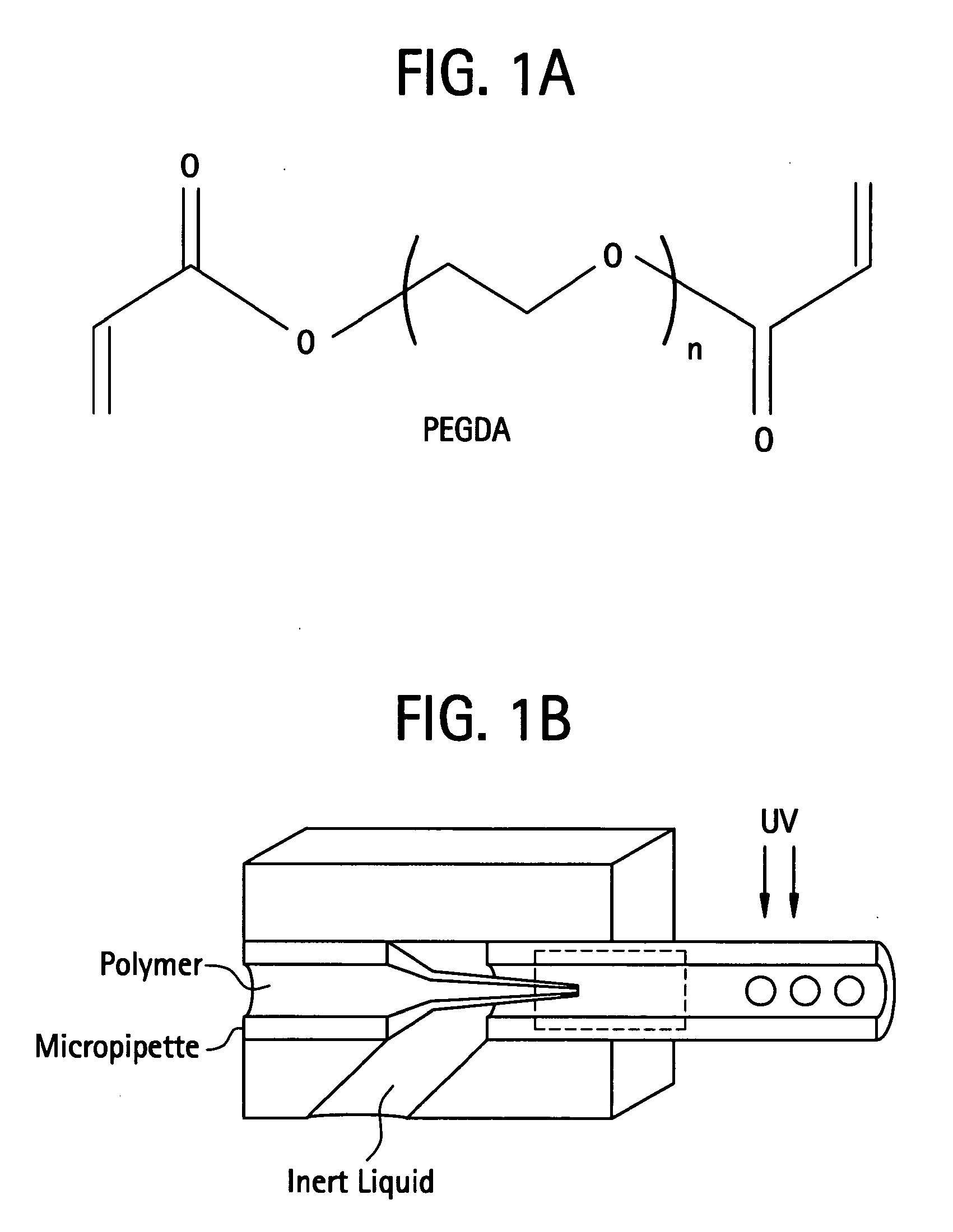Methods of synthesis and use of chemospheres
a chemosphere and synthesis technology, applied in the field of synthesis and use of chemospheres, can solve the problems of maximizing the time of drug release, burst release of therapeutic agents, and inability to readily phagocytize liposome polymer matrices, and achieve the effect of preventing immunoclearan
- Summary
- Abstract
- Description
- Claims
- Application Information
AI Technical Summary
Benefits of technology
Problems solved by technology
Method used
Image
Examples
example 1
Methods of Preparation of Embolization Particles
[0562]In a preferred embodiment a polymer is prepared by mixing poly(ethylene glycol)-diacrylate (PEGDA; Nektar Therapeutics, Huntsville, Ala.) in sterile phosphate-buffered saline (PBS; GIBCO Invitrogen, Carlsbad, Calif.) to make a 15% (w / v) hydrogel. Photoinitiator, Igracure D2959 (Ciba Specialty Chemicals, Tarrytown, N.Y.) is added to the polymer at a concentration of 0.05% (w / v). The mixture is then added drop-wise to a reactant medium made up of an inert bath. An inert bath includes but is not limited to a formulation of 160 grams Span 80 and 3,840 grams USP mineral oil. The inert bath is then stirred at a rate of 200 RPM in a reaction vat. The Vat was then exposed to UV irradiation to initiate polymerization. Once reacted, the resultant crosslinked PEGDA sphere were cleaned of mineral oil and Span 8. The cleaning process involved dumping the resultant spheres over a 45-micron screen such that the beads were trapped on the screen ...
example 2
Methods of Preparation of Embolization Particles
[0563]In an alternate example, embolization particles were made using a slightly different process. The same procedure as above was followed, but the rpm of the reaction medium was increased to 300 rpm. The resulting particles exhibited the same mechanical properties as the spheres as described in Example 1, but the average size of these particles was smaller than the average size of the particles made according to the methods described in Example 1. Without being limited by theory, it is believed based on these results that the rpm of the reaction medium can be manipulated to obtain desired particle sizes.
example 3
Methods of Preparation of Embolization Particles
[0564]In this example, embolization particles were made using a slightly different process. The same procedure as in Example 1 was followed, but a van de graaf generator was attached via an insulated wire to the tip of the needle extruding the pegda solution. The inert bath was grounded by placing an insulated wire that was attached to an external ground in the bath. With the bath grounded the van de graaf generator was turned on thereby creating an electrostatic charge between the needle tip and the inert bath. Without being limited by theory, it is believed that the electrostatic potential between the needle tip and inert bath causes PEGDA droplets to fall into the bath at a smaller size.
PUM
| Property | Measurement | Unit |
|---|---|---|
| bioactive | aaaaa | aaaaa |
| metallic | aaaaa | aaaaa |
| radioactive | aaaaa | aaaaa |
Abstract
Description
Claims
Application Information
 Login to View More
Login to View More - R&D
- Intellectual Property
- Life Sciences
- Materials
- Tech Scout
- Unparalleled Data Quality
- Higher Quality Content
- 60% Fewer Hallucinations
Browse by: Latest US Patents, China's latest patents, Technical Efficacy Thesaurus, Application Domain, Technology Topic, Popular Technical Reports.
© 2025 PatSnap. All rights reserved.Legal|Privacy policy|Modern Slavery Act Transparency Statement|Sitemap|About US| Contact US: help@patsnap.com



